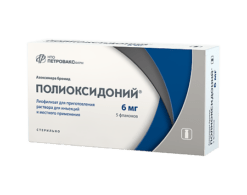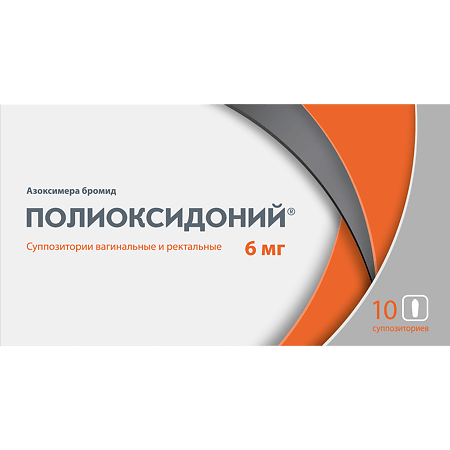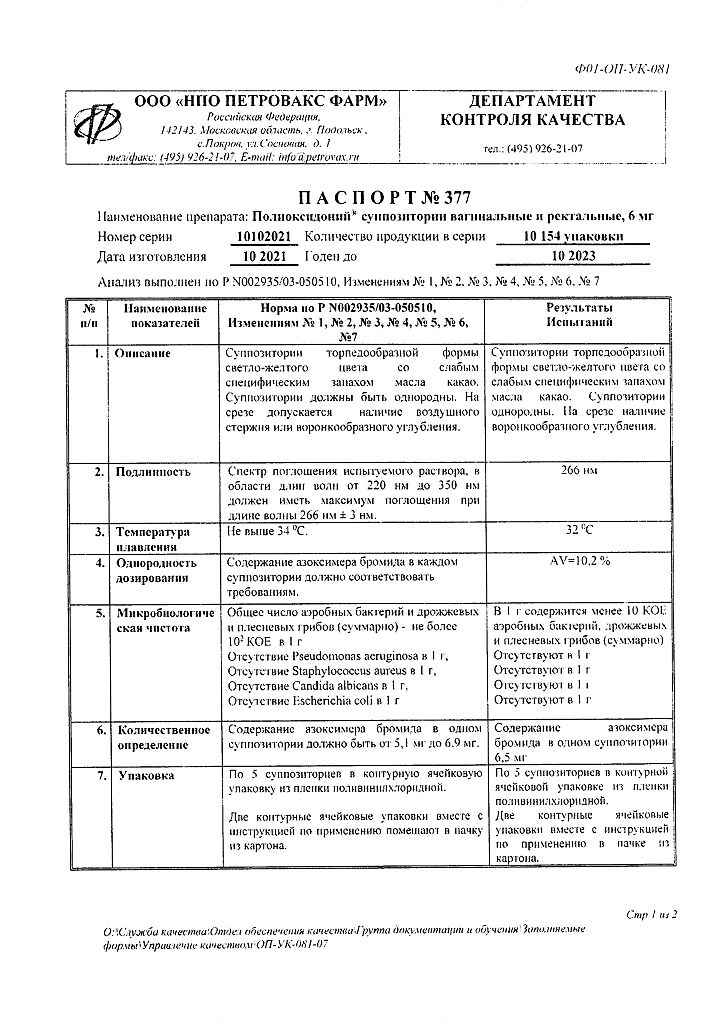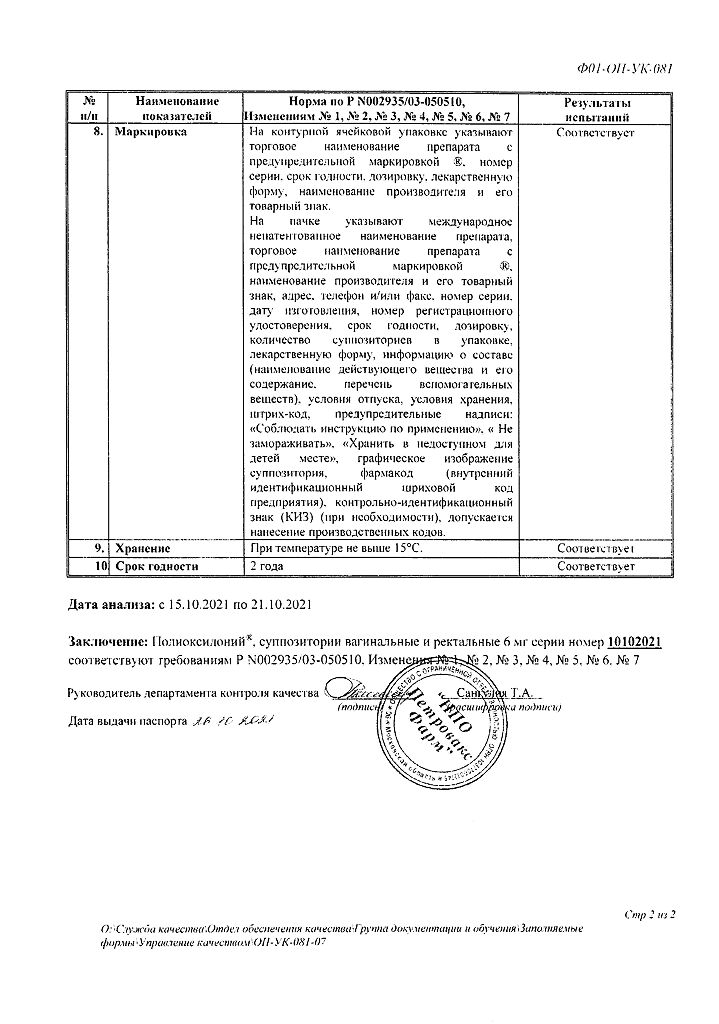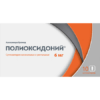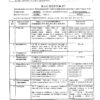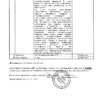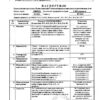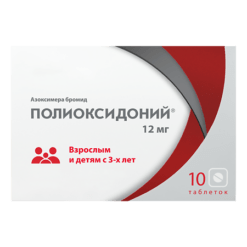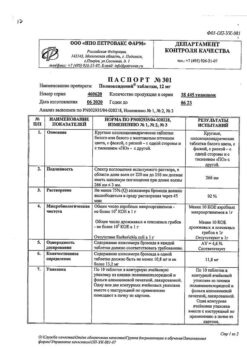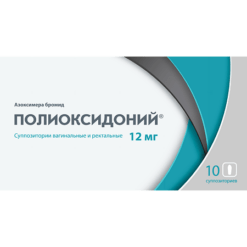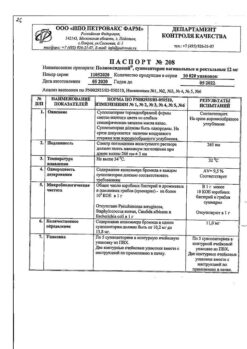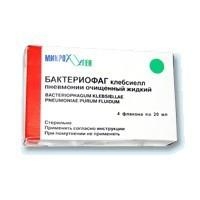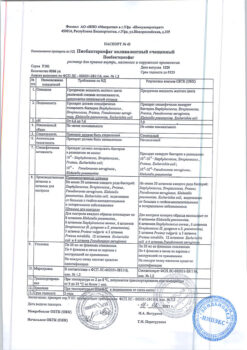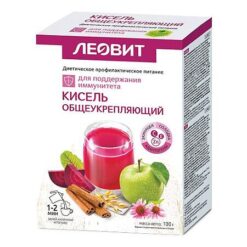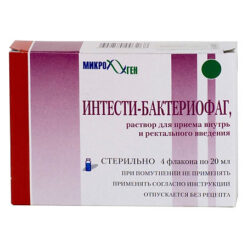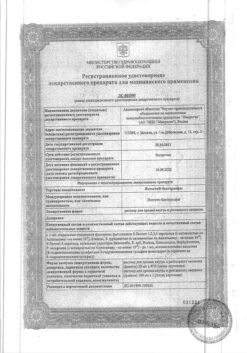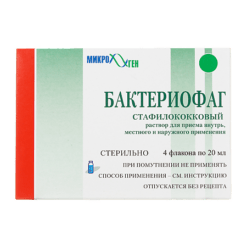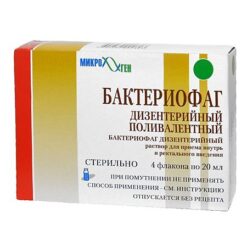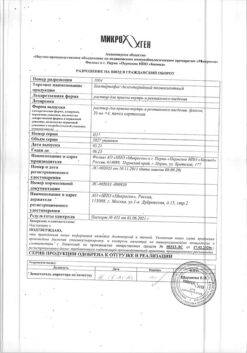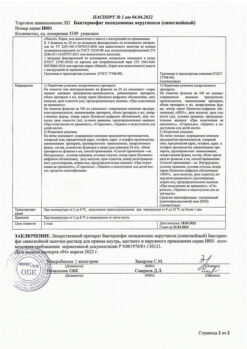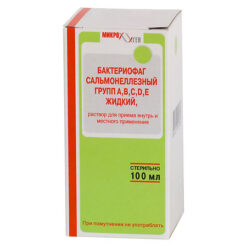Subtotal: €33.63
Polyoxidonium, vaginal and rectal suppositories 6 mg 10 pcs
€27.54 €22.95
Pharmacodynamics
Longidase® has hyaluronidase (enzymatic) activity with prolonged action, chelating, antioxidant, immunomodulatory and moderately pronounced anti-inflammatory properties.
The prolonged action of the enzyme is achieved by covalent binding of the enzyme with a physiologically active polymeric carrier (azoximer). Longidase® shows antifibrotic properties, weakens acute phase of inflammation, regulates (increases or decreases depending on the initial level) synthesis of inflammatory mediators (interleukin-1 and tumor necrosis factor-alpha), increases humoral immune response and resistance of the body to infection.
The pronounced antifibrotic properties of Longidase are provided by conjugation of hyaluronidase with the carrier, which significantly increases resistance of the enzyme to denaturing influences and to the action of inhibitors: the enzymatic activity of Longidase is maintained when heated to 37 °С for 20 days, while the native hyaluronidase in the same conditions loses its activity within a day.
The specific substrate of testicular hyaluronidase is glycosaminoglycans (hyaluronic acid, chondroitin, chondroitin-4-sulfate, chondroitin-6-sulfate), which form the basis of the connective tissue matrix.
Glycosaminoglycans change their basic properties as a result of depolymerization (breaking the bond between C1 acetylglucosamine and C4 glucuronic or induronic acids): viscosity is reduced, the ability to bind water, metal ions is reduced, the permeability of tissue barriers is temporarily increased, fluid movement in the intercellular space is facilitated, the elasticity of connective tissue is increased, which is manifested in a reduction of tissue swelling, flattening of scars, increased joint movement, reduction of contractures and prevention of their formation, reduction of adhesions.
Biochemical, immunological, histological and electron-microscopic investigations demonstrate that Longidase® does not damage the normal connective tissue, but causes destruction of connective tissue altered in its composition and structure in the area of fibrosis.
Longidaza® has no mutagenic, embryotoxic, teratogenic and carcinogenic effect.
The drug is well tolerated by patients, no local and general allergic reactions were noted.
The use of Longidase in therapeutic doses during or after surgical treatment does not cause deterioration of the course of postoperative period or progression of the infection; it does not slow down the recovery of bone tissue.
Pharmacokinetics
The experimental study of pharmacokinetics established that with rectal administration Longidase® is characterized by high rate of distribution in the body, is well absorbed into the systemic bloodstream and reaches maximum concentration in the blood after 1 hour. Period of half-distribution is about 0.5 hours; period of half-elimination is from 42 to 84 hours. It is excreted mainly by the kidneys.
The drug penetrates into all organs and tissues, including those through the blood-brain and blood-ophthalmic barriers. It was found that there is no tissue cumulation.
The bioavailability of Longidase® by rectal administration is high: about 90 %.
Indications
Treatment and prevention of infectious and inflammatory diseases (viral, bacterial and fungal etiology), in the acute stage and remission in adults and children over 1 year.
For the treatment of adults (in complex therapy):
acute and exacerbation of chronic recurrent infectious and inflammatory diseases of various localization, bacterial, viral and fungal etiology;
inflammatory diseases of the urogenital tract (urethritis, cystitis, pyelonephritis, prostatitis, salpingoophoritis, endometritis, colpitis, cervicitis, cervicosis, bacterial vaginosis);
various forms of pulmonary tuberculosis;
allergic diseases (including hay fever, bronchial asthma, atopic dermatitis), complicated by recurrent bacterial fungal and viral infections;
rheumatoid arthritis, complicated by recurrent bacterial, fungal and viral infections, against the background of long-term use of immunosuppressants;
to activate regenerative processes (fractures, burns, trophic ulcers);
in complex therapy of oncological diseases during chemotherapy and radiation therapy, to reduce the nephro- and hepatotoxic effects of drugs.
For prophylaxis in adults (monotherapy):
recurrent and herpetic infections of the urogenital tract;
exacerbations of chronic foci of infections;
influenza and other acute respiratory infections in the pre-epidemic and epidemic periods in immunocompromised individuals;
secondary immunodeficiencies resulting from aging or exposure to adverse factors.
For the treatment of children from 6 to 18 years of age (in complex therapy):
acute and exacerbation of chronic recurrent infectious and inflammatory diseases of various localization, bacterial, viral and fungal etiology;
inflammatory diseases of the urogenital tract (urethritis, cystitis, pyelonephritis);
various forms of pulmonary tuberculosis;
allergic diseases (including hay fever, bronchial asthma, atopic dermatitis), complicated by recurrent bacterial fungal and viral infections;
to activate regenerative processes (fractures, burns, trophic ulcers);
in complex therapy of oncological diseases during chemotherapy and radiation therapy, to reduce the nephro- and hepatotoxic effects of drugs.
For prevention in children from 6 to 18 years of age (monotherapy):
recurrent and herpetic infections of the urogenital tract;
exacerbations of chronic foci of infections;
influenza and other acute respiratory infections in the pre-epidemic and epidemic periods in immunocompromised individuals.
For the treatment of children from 1 year to 6 years (in complex therapy):
acute and exacerbation of chronic recurrent infectious and inflammatory diseases of various localization, bacterial, viral and fungal etiology;
inflammatory diseases of the urogenital tract (urethritis, cystitis, pyelonephritis);
various forms of pulmonary tuberculosis;
allergic diseases (including hay fever, bronchial asthma, atopic dermatitis), complicated by recurrent bacterial fungal and viral infections;
to activate regenerative processes (fractures, burns, trophic ulcers).
For prevention in children from 1 to 6 years of age (monotherapy):
recurrent and herpetic infections of the urogenital tract;
exacerbations of chronic foci of infections;
influenza and other acute respiratory infections in the pre-epidemic and epidemic periods in immunocompromised individuals.
Pharmacological effect
Pharmacotherapeutic group: immunomodulatory agent.
ATX code: [103]
Pharmacological properties
Pharmacodynamics
Azoximer bromide has a complex effect:
immunomodulatory, detoxifying, antioxidant, moderate anti-inflammatory.
The basis of the mechanism of immunomodulatory action of Azoximer bromide is a direct effect on phagocytic cells and natural killer cells, as well as stimulation of antibody formation and the synthesis of interferon-alpha and interferon-gamma.
The detoxification and antioxidant properties of Azoximer bromide are largely determined by the structure and high-molecular nature of the drug.
Azoximer bromide increases the body’s resistance to local and generalized infections of bacterial, fungal and viral etiology. Restores immunity in secondary immunodeficiency conditions caused by various infections, injuries, complications after surgery, burns, autoimmune diseases, malignant neoplasms, the use of chemotherapeutic agents, cytostatics, steroid hormones.
Azoximer bromide blocks soluble toxic substances and microparticles, has the ability to remove toxins and heavy metal salts from the body, and inhibits lipid peroxidation both by intercepting free radicals and by eliminating catalytically active Fe2+ ions.
Azoximer bromide reduces the inflammatory response
by normalizing the synthesis of pro- and anti-inflammatory cytokines.
Azoximer bromide is well tolerated, does not have mitogenic, polyclonal activity, antigenic properties, does not have allergenic, mutagenic, embryotoxic, teratogenic and carcinogenic effects.
Pharmacokinetics
Azoximer bromide in suppositories when administered rectally has high bioavailability (at least 70%), reaching a maximum concentration in the blood 1 hour after administration. The half-life of distribution is about 0.5 hours, the half-life of elimination is 36.2 hours.
In the body it is hydrolyzed to oligomers, which are excreted primarily by the kidneys. There is no cumulative effect.
Special instructions
If an allergic reaction develops, you should stop using the drug Polyoxidonium® and contact
doctor.
If it is necessary to discontinue drug therapy, discontinuation can be carried out immediately. If you miss a single dose of the drug, you must take it as soon as possible, but if it is time to take the next dose, do not increase the dose.
Do not use the drug if there are visual signs of its unsuitability (defective packaging, change in color of the suppository).
Impact on the ability to drive vehicles and machinery
The use of the drug Polyoxidonium® does not affect the ability to drive vehicles, maintain machinery and other types of work that require increased concentration and speed of psychomotor reactions.
Active ingredient
Azoximer bromide
Composition
Active ingredient: azoximer bromide – 6 mg or 12 mg;
Excipients:
mannitol – 1.8 mg, povidone – 1.2 mg, cocoa seed oil (cocoa butter) – 1291.0 mg (for a dosage of 6 mg); mannitol – 5.6 mg, povidone – 2.4 mg, cocoa seed oil (cocoa butter) – 1282.0 mg (for a dosage of 17 mg).
Pregnancy
Use during pregnancy and breastfeeding is contraindicated (there is no clinical experience of use).
Experimental use of the drug Polyoxidonium® in animals did not reveal embryotoxic or teratogenic effects or effects on fetal development.
Before using Polyoxidonium®, if you are pregnant, or think you might be pregnant, or are planning a pregnancy, you should consult your doctor.
During breastfeeding, you should consult your doctor before using Polyoxidonium®.
Contraindications
hypersensitivity to azoximer bromide or to any of the excipients of the drug;
pregnancy, breastfeeding period;
children under 1 year of age;
acute renal failure.
With caution
If you have the diseases listed in this section, consult your doctor before starting to take the drug:
chronic renal failure (prescribed no more than 2 times a week).
Side Effects
Very rare: local reactions in the form of redness, swelling, itching of the perianal area, vaginal itching due to individual sensitivity to the components of the drug.
If you notice any side effects not listed in the instructions, tell your doctor.
Interaction
Azoximer bromide does not inhibit the cytochrome P-450 isoenzymes CYP1A2, CYP2C9, CYP2C19, CYP206, therefore the drug is compatible with many drugs, including antibiotics, antiviral, antifungal and antihistamines, glucocorticosteroids and cytostatics.
If you are taking the above or other medications (including over-the-counter medications), consult your doctor before starting to use Polyoxidonium®.
Overdose
No cases of overdose have been reported.
Storage conditions
At a temperature not exceeding 15 °C.
Do not freeze. Keep out of the reach of children.
Shelf life
2 years. The drug should not be used after the expiration date indicated on the package.
Manufacturer
NPO Petrovax Pharm, Russia
| Shelf life | 2 years. Do not use the drug after the expiration date stated on the package. |
|---|---|
| Conditions of storage | In a dry place protected from light at a temperature of 2 to 15 ° C. Keep out of the reach of children. |
| Manufacturer | NPO Petrovax Pharm, Russia |
| Medication form | Vaginal and rectal suppositories |
| Brand | NPO Petrovax Pharm |
Other forms…
Related products
Buy Polyoxidonium, vaginal and rectal suppositories 6 mg 10 pcs with delivery to USA, UK, Europe and over 120 other countries.

